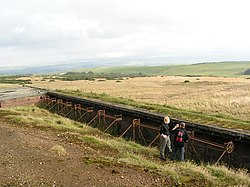| Churchill Barracks | |
|---|---|
| Ayr | |
 Disused shooting range south-west of Ayr, which formed part of the facilities associated with Churchill Barracks | |
| Site information | |
| Type | Barracks |
| Owner | Ministry of Defence |
| Operator | |
| Location | |
| Coordinates | 55°27′58″N4°38′16″W / 55.46621°N 4.63788°W |
| Site history | |
| Built | 1795 |
| Built for | War Office |
| In use | 1795–1959 |
| Garrison information | |
| Occupants | Royal Scots Fusiliers |
Churchill Barracks was a military installation in Ayr, Scotland.
